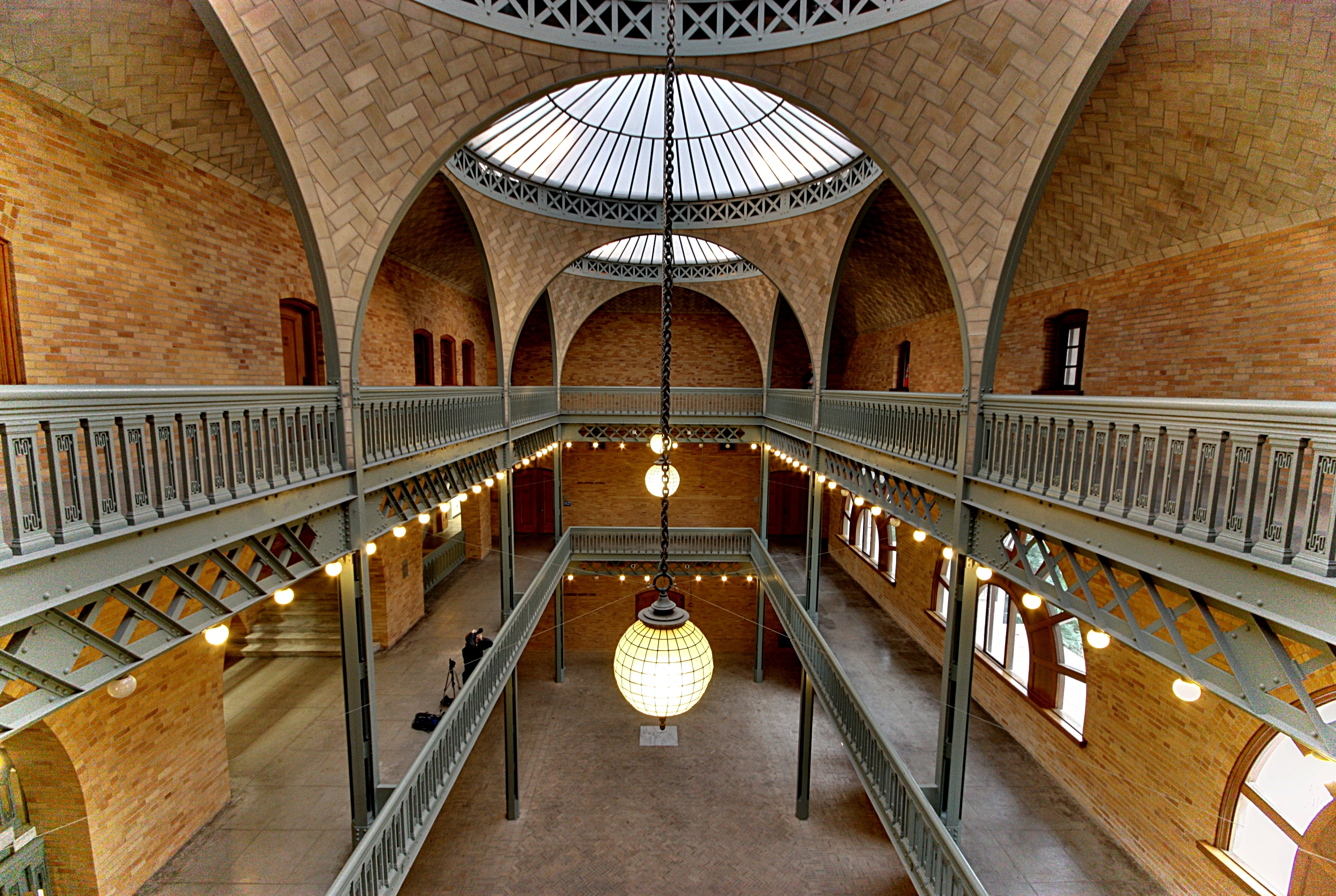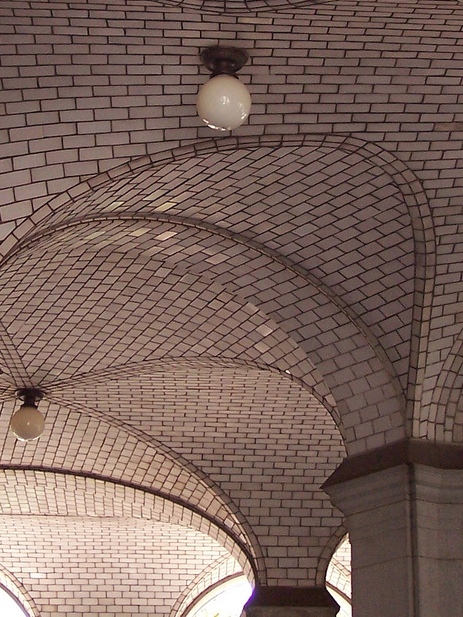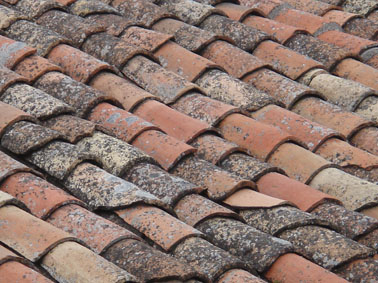|
Hearst Memorial Mining Building
The Hearst Memorial Mining Building at the University of California, Berkeley, is home to the university's Materials Science and Engineering Department, with research and teaching spaces for the subdisciplines of biomaterials; chemical and electrochemical materials; computational materials; electronic, magnetic, and optical materials; and structural materials. The Beaux-Arts-style Classical Revival building is listed in the National Register of Historic Places and is designated as part of California Historical Landmark #946. It was designed by John Galen Howard, with the assistance of architect and Berkeley alumna Julia Morgan and the Dean of the College of Mines at that time, Samuel B. Christy. It was the first building on that campus designed by Howard. Construction began in 1902 as part of the Phoebe Hearst campus development plan. The building was dedicated to the memory of her husband George Hearst, who had been a successful miner. From 1998 to 2003, the building underwen ... [...More Info...] [...Related Items...] OR: [Wikipedia] [Google] [Baidu] |
Berkeley, California
Berkeley ( ) is a city on the eastern shore of San Francisco Bay in northern Alameda County, California, United States. It is named after the 18th-century Anglo-Irish bishop and philosopher George Berkeley. It borders the cities of Oakland, California, Oakland and Emeryville, California, Emeryville to the south and the city of Albany, California, Albany and the Unincorporated area, unincorporated community of Kensington, California, Kensington to the north. Its eastern border with Contra Costa County, California, Contra Costa County generally follows the ridge of the Berkeley Hills. The 2020 United States census, 2020 census recorded a population of 124,321. Berkeley is home to the oldest campus in the University of California, the University of California, Berkeley, and the Lawrence Berkeley National Laboratory, which is managed and operated by the university. It also has the Graduate Theological Union, one of the largest religious studies institutions in the world. Berkeley is ... [...More Info...] [...Related Items...] OR: [Wikipedia] [Google] [Baidu] |
Aluminium
Aluminium (or aluminum in North American English) is a chemical element; it has chemical symbol, symbol Al and atomic number 13. It has a density lower than that of other common metals, about one-third that of steel. Aluminium has a great affinity towards oxygen, passivation (chemistry), forming a protective layer of aluminium oxide, oxide on the surface when exposed to air. It visually resembles silver, both in its color and in its great ability to reflect light. It is soft, magnetism, nonmagnetic, and ductility, ductile. It has one stable isotope, 27Al, which is highly abundant, making aluminium the abundance of the chemical elements, 12th-most abundant element in the universe. The radioactive decay, radioactivity of aluminium-26, 26Al leads to it being used in radiometric dating. Chemically, aluminium is a post-transition metal in the boron group; as is common for the group, aluminium forms compounds primarily in the +3 oxidation state. The aluminium cation Al3+ ... [...More Info...] [...Related Items...] OR: [Wikipedia] [Google] [Baidu] |
Rafael Guastavino
Rafael Guastavino Moreno (; March 1, 1842 February 1, 1908) was a Spanish building engineer and builder who immigrated to the United States in 1881; his career for the next three decades was based in New York City. Based on the Catalan vault, he created the Guastavino tile, a "Tile Arch System", patented in the United States in 1885, which was used for constructing robust, self-supporting arches and Vault (architecture), architectural vaults using interlocking terracotta tiles and layers of mortar (masonry), mortar. His work appears in numerous prominent projects designed by major architectural firms in New York and other cities of the Northeast. Guastavino tile is found in some of New York's most prominent Beaux Arts architecture, Beaux-Arts landmarks and in major buildings across the United States. It is also used in numerous architecturally important and famous buildings with vaulted spaces. Guastavino Fireproof Construction Company In 1881 Guastavino came to New York City ... [...More Info...] [...Related Items...] OR: [Wikipedia] [Google] [Baidu] |
Valencians
Valencians ( ; ) are the native people of the Valencian Community, in eastern Spain. Since 2006, the Valencian people are officially recognised in the Valencian Statute of Autonomy as a ''nationality'' "within the unity of the Spanish nation". The official languages of Valencia are Valencian and Spanish.Art. 6.2 of thValencian Statute of Autonomy The Valencian Community is politically divided in three provinces, from south to north: Alicante, Valencia and Castellón. Its capital is the city of Valencia. Historical background In 1237, the Andalusi Taifa of Valencia was taken by king James I the Conqueror of the Crown of Aragon. The population of the new kingdom was by far mostly Muslim, so the crown started a campaign of repopulation of the lands with Christians, as usual in the ''Reconquista''. The new Christian arrivals came from Catalonia and Aragon. Aragonese presence was most dominant in the interior parts of the kingdom (as can be assumed by geographical factors); th ... [...More Info...] [...Related Items...] OR: [Wikipedia] [Google] [Baidu] |
Guastavino Tile
The Guastavino tile arch system is a version of the Catalan vault introduced to the United States in 1885 by Spanish architect and builder Rafael Guastavino (1842–1908). It was patented in the United States by Guastavino in 1892. Description Guastavino vaulting is a technique for constructing robust, self-supporting arches and Vault (architecture), architectural vaults using interlocking terracotta tiles and layers of mortar (masonry), mortar to form a thin skin, with the tiles following the curve of the roof as opposed to horizontally (Corbel arch, corbelling), or perpendicular to the curve (as in Roman vaulting). This is known as timbrel vaulting, because of its supposed likeness to the skin of a timbrel or tambourine. It is also called Catalan vaulting (though Guastavino did not use this term) and "compression-only thin-tile vaulting". Guastavino tile is found in some of the most prominent Beaux Arts architecture, Beaux-Arts structures in New York and Massachusetts, as ... [...More Info...] [...Related Items...] OR: [Wikipedia] [Google] [Baidu] |
Bibliothèque Nationale De France
The (; BnF) is the national library of France, located in Paris on two main sites, ''Richelieu'' and ''François-Mitterrand''. It is the national repository of all that is published in France. Some of its extensive collections, including books and manuscripts but also precious objects and artworks, are on display at the BnF Museum (formerly known as the ) on the Richelieu site. The National Library of France is a public establishment under the supervision of the Ministry of Culture. Its mission is to constitute collections, especially the copies of works published in France that must, by law, be deposited there, conserve them, and make them available to the public. It produces a reference catalogue, cooperates with other national and international establishments, as well as participates in research programs. History The National Library of France traces its origin to the royal library founded at the Louvre Palace by Charles V in 1368. Charles had received a collection o ... [...More Info...] [...Related Items...] OR: [Wikipedia] [Google] [Baidu] |
Henri Labrouste
Pierre-François-Henri Labrouste () (11 May 1801 – 24 June 1875) was a French architect from the famous school of architecture. After a six-year stay in Rome, Labrouste established an architectural training workshop, which soon became known for rationalism. He became noted for his use of iron-frame construction and was one of the first to realize the importance of its use. Biography Born in Paris, Labrouste was one of five children of , a lawyer and politician from Bordeaux and Anne-Dominique Gourg (1764–1851), daughter and granddaughter of cognac merchants. He entered the Collège Sainte-Barbe as a student in 1809. He was then admitted into the second class and the Lebas-Vaudoyer workshop in the École Royale des Beaux Arts in 1819. In 1820, he was promoted to the first class. Competing for the Grand Prix, Labrouste was awarded second place (the Palais de Justice scored first) by Guillaume-Abel Blouet in 1821. In 1823, he won the departmental prize and worked as ... [...More Info...] [...Related Items...] OR: [Wikipedia] [Google] [Baidu] |
Hearst Mining Building - Flickr - Joe Parks
Hearst may refer to: Places * Hearst, former name of Hacienda, California, United States * Hearst, Ontario, town in Northern Ontario, Canada * Hearst, California, an unincorporated community in Mendocino County, United States * Hearst Island, an island in Antarctica * Hearst Castle, a mansion built by William Randolph Hearst in San Simeon, California, United States * Hearst Block, a provincial government building in Toronto, Ontario, Canada People * Hearst (surname) * William Randolph Hearst (1863–1951), newspaper magnate * Hunter Hearst Helmsley (b. 1969), WWE professional wrestler Arts, entertainment, and media * Hearst College, a fictional College in the CW series ''Veronica Mars'' * Hearst Communications, a privately held media conglomerate * Hearst Television, Hearst Communications' broadcast television division (formerly Hearst-Argyle Television) Other uses * Université de Hearst, a French-language university federated with Laurentian University, based in Hearst, Ontari ... [...More Info...] [...Related Items...] OR: [Wikipedia] [Google] [Baidu] |
Robert Ingersoll Aitken
Robert Ingersoll Aitken (May 8, 1878 – January 3, 1949) was an American sculpture, sculptor. Perhaps his most famous work is the West Pediment of the United States Supreme Court Building. Life and career Born to Charles H. Aitken and Katherine A. Higgens in San Francisco, California, Aitken studied there at the San Francisco Art Institute, Mark Hopkins Institute of Art [also called the California School of Design – now the San Francisco Art Institute] with Douglas Tilden. From 1901 until 1904 he was an instructor at the Institute. During this period, Aitken in 1900 designed San Francisco's original municipal flag; the design was in use from 1900 until sometime in the early 1920s. In 1903, he sculpted the Victory figure for the top of the Dewey Monument, which still stands in San Francisco's Union Square. In 1904, Aitken carved a statue of a female figure, representing the Republic#United States, Republic for the William McKinley Memorial, which still stands in the San Fra ... [...More Info...] [...Related Items...] OR: [Wikipedia] [Google] [Baidu] |
Architecture Of The California Missions
The architecture of the California missions was influenced by several factors, those being the limitations in the construction materials that were on hand, an overall lack of skilled labor, and a desire on the part of the founding priests to emulate notable structures in their Spanish homeland. While no two mission complexes are identical, they all employed the same basic building style. Site selection and layout Although the missions were considered temporary ventures by the Spanish hierarchy, the development of an individual settlement was not simply a matter of "priestly whim." The founding of a mission followed longstanding rules and procedures; the paperwork involved required months, sometimes years of correspondence, and demanded the attention of virtually every level of the bureaucracy. Once empowered to erect a mission in a given area, the men assigned to it chose a specific site that featured a good water supply, plenty of wood for fires and building material, and ample ... [...More Info...] [...Related Items...] OR: [Wikipedia] [Google] [Baidu] |
California Hall (UC Berkeley)
California Hall is one of the original "classical core" Beaux-Arts-style Classical Revival buildings on the UC Berkeley campus. Construction began in 1903 under the lead of University Architect John Galen Howard after the university's adoption of the Phoebe Hearst master architectural plan for the Berkeley campus. The building opened in August, 1905. In 1982, it was named to the National Register of Historic Places, and is designated as an architectural feature of California Historic Landmark no. 946. In 1991, the Landmarks Preservation Committee of the City of Berkeley designated it Berkeley City Landmark no. 147. It currently houses the University of California Berkeley Chancellor's Office and the Graduate Division. History California Hall was one of the first buildings to be constructed upon adoption of the Hearst architectural plan. Opened in 1905, it was built with a state appropriation of $250,000 and university funds of $19,000. It originally housed the university's c ... [...More Info...] [...Related Items...] OR: [Wikipedia] [Google] [Baidu] |
UC Berkeley
The University of California, Berkeley (UC Berkeley, Berkeley, Cal, or California), is a public land-grant research university in Berkeley, California, United States. Founded in 1868 and named after the Anglo-Irish philosopher George Berkeley, it is the state's first land-grant university and is the founding campus of the University of California system. Berkeley has an enrollment of more than 45,000 students. The university is organized around fifteen schools of study on the same campus, including the College of Chemistry, the College of Engineering, College of Letters and Science, and the Haas School of Business. It is classified among "R1: Doctoral Universities – Very high research activity". Lawrence Berkeley National Laboratory was originally founded as part of the university. Berkeley was a founding member of the Association of American Universities and was one of the original eight " Public Ivy" schools. In 2021, the federal funding for campus research and dev ... [...More Info...] [...Related Items...] OR: [Wikipedia] [Google] [Baidu] |









